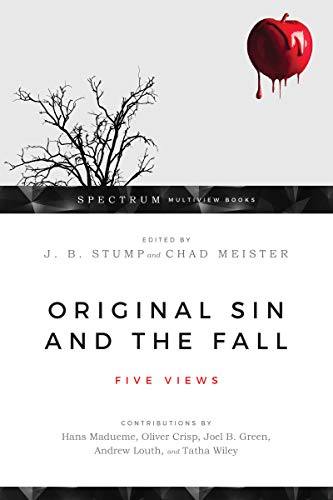A Brief Book Summary from Books At a Glance
by Steve West
Introduction
This perspectives book contains five essays on the doctrine of original sin, as well as responses to the other essays by each of the contributors. The doctrine is approached from a variety of angles and areas of agreement and disagreement are noted. Some of the approaches have affinities with each other and some are radically incompatible. The contributions engage biblical studies, theological formulation, history, science, psychology, and methodology.
Table of Contents
Introduction – Editors
Part One: Perspectives on Original Sin and the Fall
Chapter 1 An Augustinian-Reformed View – Hans Madueme
Chapter 2 A Moderate Reformed View – Oliver D. Crisp
Chapter 3 A Wesleyan View – Joel B. Green
Chapter 4 An Easter Orthodox View – Andrew Louth
Chapter 5 A Reconceived View – Tatha Wiley
Part Two: Responses
Chapter 6 An Augustinian-Reformed Response
Chapter 7 A Moderate Reformed Response
Chapter 8 A Wesleyan Response
Chapter 9 An Eastern Orthodox Response
Chapter 10 A Reconceived Response
Summary
Chapter 1: An Augustinian-Reformed View
The doctrine of the fall used to be accepted by virtually everyone. Humans were seen to be intellectually and morally fallen, and science, medicine, and empirical investigation were for the purposes of understanding God’s creation and rolling back the effects of sin. Augustine’s view of the fall and original sin triumphed over Pelagianism, and his view was the view of the medieval Church and the Reformers. Enlightenment thinking jettisoned the doctrine. Many reject the historicity of Genesis 1-11, but the rest of the biblical authors take those chapters as narrating historical events. When Adam and Eve disobeyed God’s command not to eat from the Tree of the Knowledge of Good and Evil, even though the text does not use the term “the fall,” the next chapters show clearly the effects of sin in the world.
It is a mystery why Lucifer or Adam would fall into sin, but they did. Physical death was a delayed result of the fall; it was a symptom of spiritual death. Paul ties physical death to sin. It is against the backdrop of the fall that the gospel is good news. The eschatological golden age is predicated on the past one that was lost. Adam’s sin brought about cosmic consequences; creation was cursed. Death and suffering were introduced into the world because of Adam’s sin—there was no death before the fall. Evolutionary theory makes death part of the fabric of creation, but this is unbiblical. We cannot break the biblical nexus between Adam’s sin and death and suffering in the world.
Adam’s moral failure brought about the fall of the cosmos. The current world has continuity with the pre-fallen one, but it is cursed by God. In terms of original sin, it is clear that everyone is imperfect; everyone is a sinner. Besides this empirical reality, the depravity of every human being is taught explicitly in Scripture. For Augustine, since infants died they must have a sin nature. Adam’s fall brings it about that everyone is born in a state of guilt and moral corruption. This should be understood through a federal (representative, covenantal) account. As Adam’s sin is imputed to all his physical descendants, so Christ’s righteousness is imputed to all of his spiritual descendants. We are counted guilty of Adam’s sin, but not the other sins of our ancestors.
This may seem unfair, but it is no less fair than receiving Christ’s righteousness by imputation. Some wish to restrict our inheritance from Adam to moral corruption rather than moral guilt. In this model, we are responsible only when we sin ourselves. This position lacks coherence. Evolutionary hamartiologies are becoming more common, but they fail biblically and theologically. Human beings are dualistic with body and soul. Sin is not a normal part of our biological makeup. Our actual sins emerge from original sin. God has revealed the historical fall and our condition with original sin. These doctrines are necessary for making sense of the Bible. . . .
[To continue reading this summary, please see below....]The remainder of this article is premium content. Become a member to continue reading.
Already have an account? Sign In
